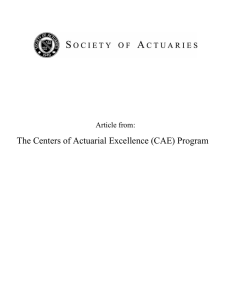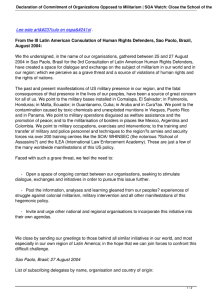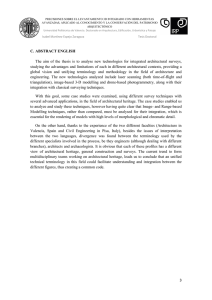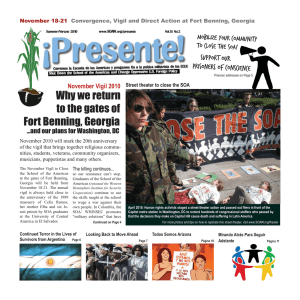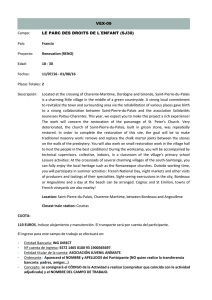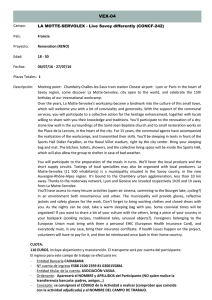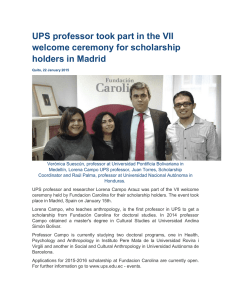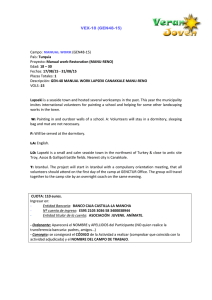From Software Architecture Descriptions to Object-Oriented
Anuncio
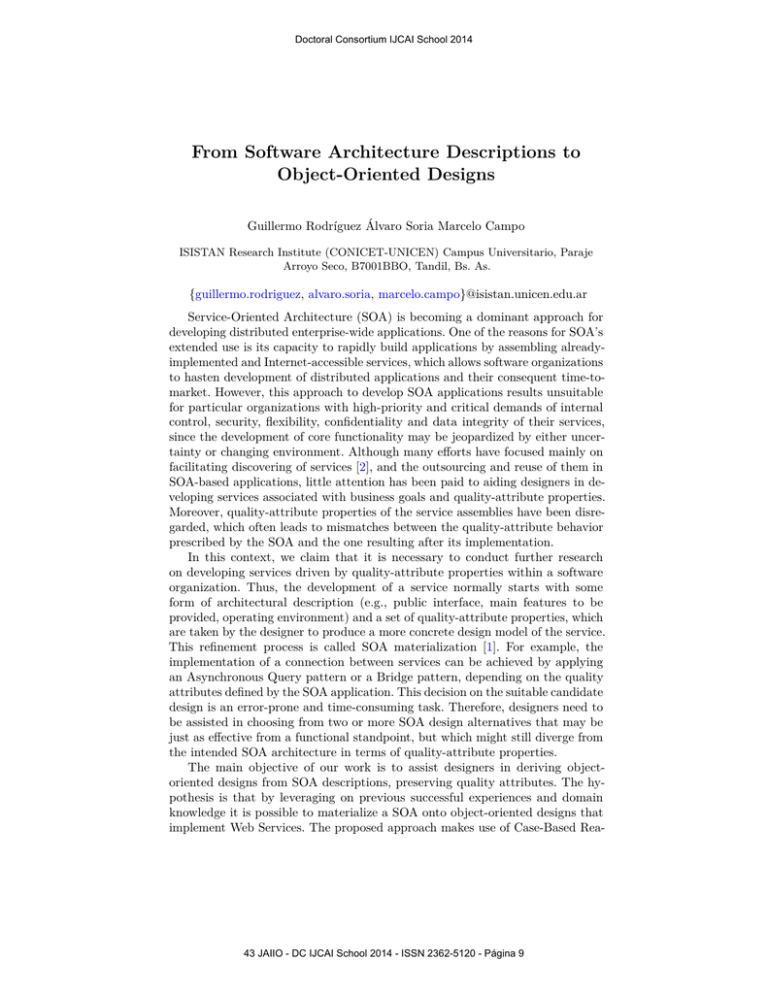
Doctoral Consortium IJCAI School 2014
From Software Architecture Descriptions to
Object-Oriented Designs
Guillermo Rodríguez Álvaro Soria Marcelo Campo
ISISTAN Research Institute (CONICET-UNICEN) Campus Universitario, Paraje
Arroyo Seco, B7001BBO, Tandil, Bs. As.
{guillermo.rodriguez, alvaro.soria, marcelo.campo}@isistan.unicen.edu.ar
Service-Oriented Architecture (SOA) is becoming a dominant approach for
developing distributed enterprise-wide applications. One of the reasons for SOA’s
extended use is its capacity to rapidly build applications by assembling alreadyimplemented and Internet-accessible services, which allows software organizations
to hasten development of distributed applications and their consequent time-tomarket. However, this approach to develop SOA applications results unsuitable
for particular organizations with high-priority and critical demands of internal
control, security, flexibility, confidentiality and data integrity of their services,
since the development of core functionality may be jeopardized by either uncertainty or changing environment. Although many efforts have focused mainly on
facilitating discovering of services [2], and the outsourcing and reuse of them in
SOA-based applications, little attention has been paid to aiding designers in developing services associated with business goals and quality-attribute properties.
Moreover, quality-attribute properties of the service assemblies have been disregarded, which often leads to mismatches between the quality-attribute behavior
prescribed by the SOA and the one resulting after its implementation.
In this context, we claim that it is necessary to conduct further research
on developing services driven by quality-attribute properties within a software
organization. Thus, the development of a service normally starts with some
form of architectural description (e.g., public interface, main features to be
provided, operating environment) and a set of quality-attribute properties, which
are taken by the designer to produce a more concrete design model of the service.
This refinement process is called SOA materialization [1]. For example, the
implementation of a connection between services can be achieved by applying
an Asynchronous Query pattern or a Bridge pattern, depending on the quality
attributes defined by the SOA application. This decision on the suitable candidate
design is an error-prone and time-consuming task. Therefore, designers need to
be assisted in choosing from two or more SOA design alternatives that may be
just as effective from a functional standpoint, but which might still diverge from
the intended SOA architecture in terms of quality-attribute properties.
The main objective of our work is to assist designers in deriving objectoriented designs from SOA descriptions, preserving quality attributes. The hypothesis is that by leveraging on previous successful experiences and domain
knowledge it is possible to materialize a SOA onto object-oriented designs that
implement Web Services. The proposed approach makes use of Case-Based Rea-
43 JAIIO - DC IJCAI School 2014 - ISSN 2362-5120 - Página 9
Doctoral Consortium IJCAI School 2014
soning (CBR) and allows designers to explore object-oriented design alternatives
for a given SOA. We focus on architectural connectors as the main entities to
codify a problem [4]. The designer’s knowledge about SOA connectors and their
materializations can be captured, whereas the process of retrieving past solutions
and applying them to new situations can be systematized. The main contribution of our work is the development of a case base that puts knowledge about
architectural connectors, quality-attribute properties and SOA design patterns
to practical use. Furthermore, we enrich the case base with mappings that explicitly link SOA and object-oriented design patterns to quality-attribute goals.
This quality-attribute perspective of SOA implementations by semi-automated
generative tools is a relatively unexplored research field.
We have made considerable progress so far in the development of the approach.
We built a core engine in an Eclipse environment and analyzed the number of
alternatives generated by our approach, leveraging on the architectural descriptions. We have performed preliminary experiments of the techniques in several
case-studies, obtaining promising results. To evaluate our CBR-based approach,
we exercised the tool support and explored the candidate experiences to materialize the input SOAs. The candidate alternatives were compared with real
alternatives available on the case-studies. Additionally, we checked the preservation of quality attributes in the different solutions by utilizing available design
documentation of the case-studies. The metrics that we used to evaluate the retrieved solutions came from the Information Retrieval field. Nonetheless, we plan
to test the techniques with more case-studies to further corroborate our findings.
Some of the next steps in our research are: (i) to study the adaption phase of
cases so as to new cases can be as similar as possible to the solutions expected
by designers; (ii) to model the behavioral aspects of SOA designs to complement the object-oriented solutions with sequence diagrams and provide further
assistance to developers when implementing SOA systems; and (iii) to analyze
conformance between the architectural behavior and its corresponding source
code once the SOA materializations are obtained. As for this issue, we developed
a tool approach to reduce conformance checking efforts in the architecture-centric
development [3].
References
1. Marcelo Campo, Andrés Díaz Pace, and Mario Zito. Developing object-oriented
enterprise quality frameworks using proto-frameworks. Software: Practice and Experience, 32(8):837–843, 2002.
2. Marco Crasso, Alejandro Zunino, and Marcelo Campo. A survey of approaches
to web service discovery in service-oriented architectures. Journal of Database
Management (JDM), 22(1):102–132, 2011.
3. JA Díaz-Pace, Álvaro Soria, Guillermo Rodríguez, and Marcelo R Campo. Assisting
conformance checks between architectural scenarios and implementation. Information and Software Technology, 54(5):448–466, 2012.
4. Nenad Medvidovic and Richard N Taylor. Software architecture: foundations, theory,
and practice. In Proceedings of the 32nd ACM/IEEE International Conference on
Software Engineering-Volume 2, pages 471–472. ACM, 2010.
43 JAIIO - DC IJCAI School 2014 - ISSN 2362-5120 - Página 10
